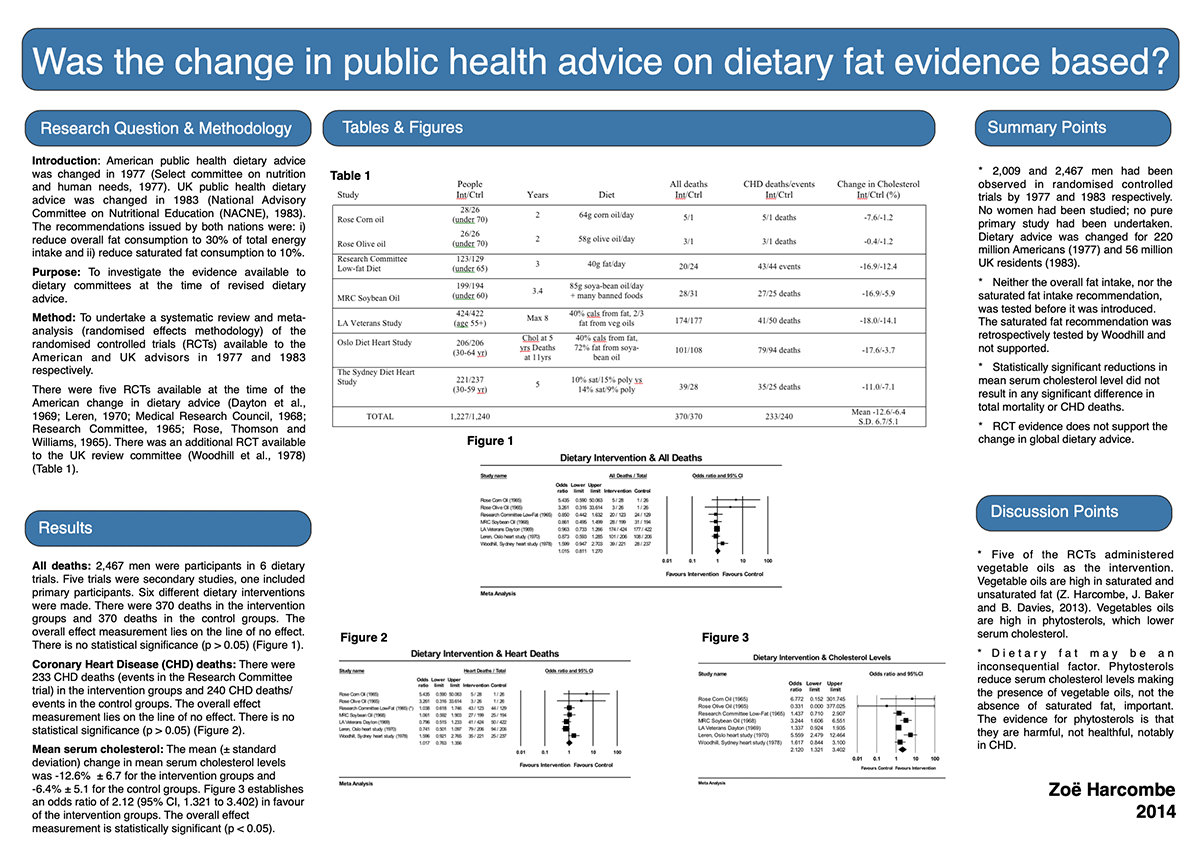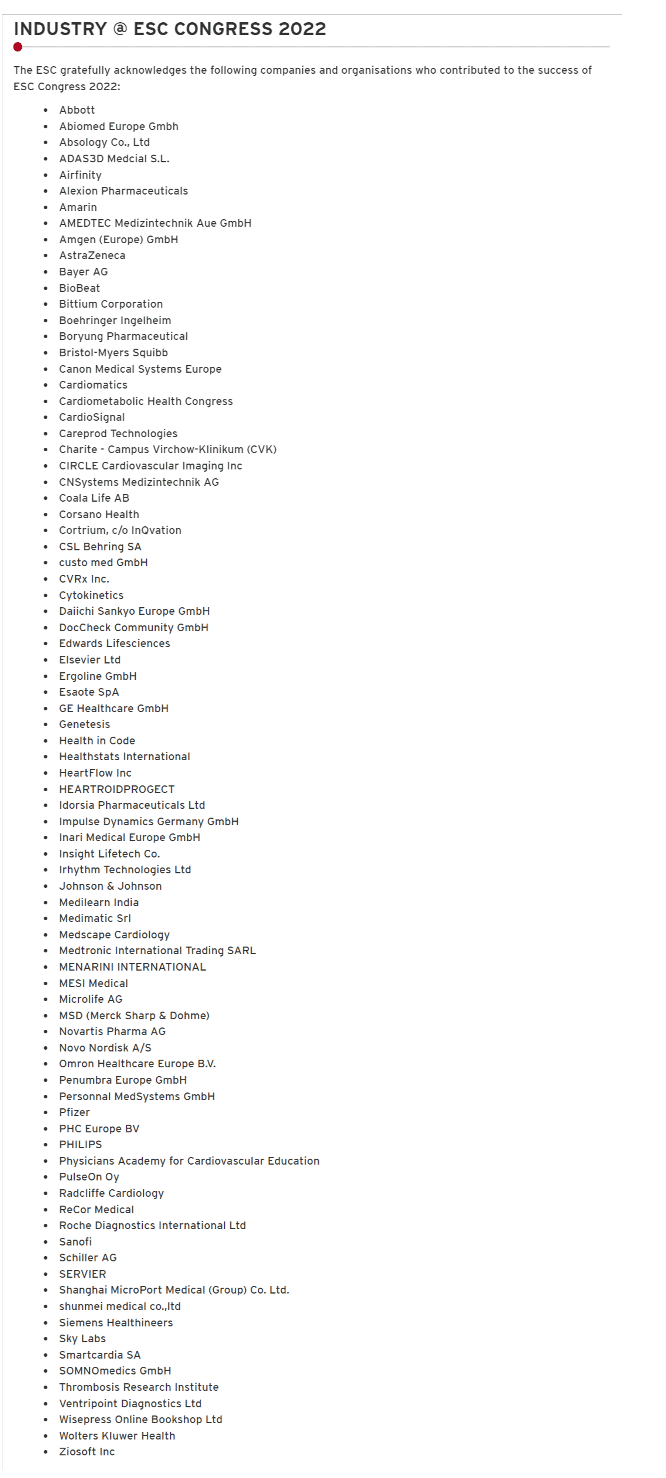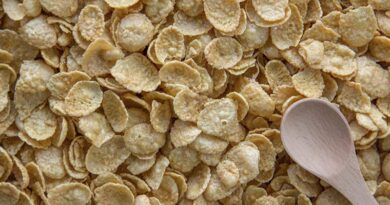Ultra-processed food & health

Executive summary
* A story about ultra-processed foods (UPFs) made headlines. The story was generated by two, short, poster presentations at the European Society of Cardiology conference (August 2023).
* There were hundreds of sessions at the conference and thousands of research summaries presented. This story probably attracted media attention because it was easier to cover than technical cardiology subjects.
* One poster was presented by a Chinese researcher. This study had looked at 10 other studies involving 325,000 people. It found that those who ate the most UPFs were 24% more likely to suffer heart attacks and strokes.
* The second poster was presented by an Australian researcher. This study had looked at 10,000 women aged 46-55. It found that those who ate the most UPFs were 39% more likely to have high blood pressure.
* Neither poster has yet been published as peer-reviewed research. Everything we know about this week’s topic comes from the media coverage. There is so much that we don’t know.
* I go through what we do know, the three limitations of population studies and what that 39% figure really means.
* Most people get their public health messages from the media. This was a good example of how bad health reporting is.
* Much as I believe in "eat real food", as a health message, the evidence against UPFs is actually under-whelming.
Introduction
One diet and health story dominated UK media coverage over the past week. I didn’t see much coverage outside the UK. On Monday 28th August, many British news outlets covered the story that ultra-processed food is harmful to health. The headline that most amused me was from the UK Telegraph newspaper “Low-fat foods could cause ‘tidal wave of harm’, new evidence shows” (Ref 1). Do you mean those low-fat foods that we have been told to eat since the late 1970s, I wondered? The subheading to that story was “Ultra-processed meals in the typical British diet pose serious health risks akin to the dangers of smoking.” Now they tell us.
The UK Times newspaper ran with “Wave of ill-health coming from ultra-processed food, experts warn. Products including breakfast cereals and supermarket sliced bread linked to heart attacks and stroke” (Ref 2). That will be those breakfast cereals and breads, which have adorned the plates and pyramids from public health guidelines since 1980.
The newspaper coverage was full of alarm. The coverage was mostly UK based because the UK has such a high level of ultra-processed food (UPF) in the diet. UPFs account for more than half of the calories eaten by the average British person (Ref 3). The key messages in the media articles were (note how the media loves to use the term ‘experts’):
– The typical British diet will cause a “tidal wave of harm” ‘experts’ have warned.
– People who eat a lot of mass-produced foods are a quarter more likely to have heart attacks and strokes, one study found.
– Another study found that women who ate high levels of processed foods – even so-called ‘healthy’ items such as protein bars, brown bread and low-fat yoghurt – were 39% more likely to develop high blood pressure.
– Many ‘experts’ said that diets need to change, and they called for more restrictions. Experts cited by the journalists included Henry Dimbleby (author of the England National Food Strategy (Ref 4)), Dr Chris Van Tulleken (who has written a best-selling book “Ultra-processed people”) and spokespeople from the Obesity Health Alliance and the British Heart Foundation.
These headlines emanated from a session at the ESC Congress 2023…
The ESC & Congress
The ESC stands for the European Society of Cardiology. The mission statement of the ESC is: “To reduce the burden of cardiovascular disease.” The ESC holds annual conferences, which it calls a “congress.” The 2023 congress was held in Amsterdam and online from Friday 25th to Monday 28th August 2023.
At the end of the congress, the website thanked 30,000 participants, 4,500 faculty and presenters, National Cardiac Societies and industry partners. Industry partners include every pharmaceutical company you can think of (Ref 5). The ESC is a big organisation with big money and big friends.
The ultra-processed food story emanated from two presentations in the same congress session. The congress session was not long. It took place between 09.15 and 09.50 on Saturday 26th August. The topic was "Nutrition, Malnutrition and Heart Disease." During 4 days there were 801 scientific sessions, 221 industry sessions, 4,475 faculty and presenters and 3,286 abstracts (i.e., summaries of research) (Ref 6). Out of all of those sessions, presentations and abstracts, the two on ultra-processed food captured the headlines. The presenters of other sessions might have been jealous.
The writer of the Telegraph article was Rosie Taylor, and the top of the article told us that she was reporting from Amsterdam. The writer of the Times article was Eleanor Hayward, and the top of that article told us that she was reporting from Amsterdam.
I’ll hypothesise as to why this conference topic received so much coverage. There was an entire press section on the congress programme (Ref 7). There was a schedule of regular press conferences. Presentations were accompanied by press releases, giving journalists the messages that the ESC and researchers wanted to reach the public. Especially if a journalist has attended the conference in person (as the two journalists above did), they need to justify the time out of the office with at least one much-read article. It is far easier to write about processed food being harmful than, for example, writing about this presentation "How to determine the severity of chronic coronary syndromes: noninvasive vs. invasive; anatomical vs. functional assessments." The public will also understand sugary cereals more than noninvasive anatomical assessments.
What is ultra-processed food?
The Telegraph article reported that the ultra-processed food classification was done “using an international recognised system.” That most likely means NOVA. The NOVA system was developed by researchers from the University of São Paulo to define the extent of processing in food (Ref 8). Food was assigned to four categories. The full list of foods in each category is shown below for convenience (all verbatim):
Group 1. Unprocessed or minimally processed foods.
This first NOVA group of unprocessed and minimally processed foods includes fresh, squeezed, chilled, frozen or dried fruits and leafy and root vegetables; grains such as brown, parboiled or white rice, corn cob or kernel, wheat berry or grain; legumes such as beans of all types, lentils, chickpeas; starchy roots and tubers such as potatoes and cassava, in bulk or packaged; fungi such as fresh or dried mushrooms; meat, poultry, fish and seafood, whole or in the form of steaks, fillets and other cuts, or chilled or frozen without added salt or oil; eggs; milk, pasteurized or powdered; fresh or pasteurized fruit or vegetable juices without added sugar, sweeteners or flavours; grits, flakes or flour made from corn, wheat, oats or cassava; pasta, couscous and polenta made with flours, flakes or grits and water without added salt or oil; tree and ground nuts and other oilseeds without added salt or sugar; spices such as pepper, cloves and cinnamon and herbs such as thyme and mint, fresh or dried; plain yoghurt with no added sugar or artificial sweeteners; tea and coffee with no added sugar; drinking-water.
Group 2. Processed culinary ingredients.
This second NOVA group of processed culinary ingredients includes vegetable oils crushed from various seeds or nuts, or fruits such as olives; butter and lard obtained from milk and pork; starches extracted from corn and other plants; sugar and molasses obtained from cane or beet; honey extracted from combs and syrup from maple trees; and salt mined or from seawater.
Group 3. Processed foods.
This third NOVA group of processed foods includes canned or bottled vegetables, fruits and legumes; salted or sugared nuts and seeds; salted, pickled, cured or smoked meats and other animal foods; canned fish; fruits in syrup; cheeses; and unpackaged freshly made breads.
Group 4. Ultra-processed foods.
This fourth NOVA group of ultra-processed food products includes carbonated drinks; sweet or savoury packaged snacks; ice cream, chocolate, candies (confectionery); mass-produced packaged breads, buns, cookies (biscuits), pastries, cakes and cake mixes; breakfast ‘cereals’, ‘cereal’ and ‘energy’ bars; margarines and spreads; processed cheese; ‘energy’ drinks; sugared milk drinks, sugared ‘fruit’ yoghurts and ‘fruit’ drinks; sugared cocoa drinks; meat and chicken extracts and ‘instant’ sauces; infant formulas, follow-on milks and other baby products (which may include expensive ingredients); ‘health’ and ‘slimming’ products such as powdered or ‘fortified’ meal and dish substitutes; and many ready-to-heat products including pre-prepared pies and pasta and pizza dishes; poultry and fish ‘nuggets’ and ‘sticks’; sausages, burgers, hot dogs and other reconstituted meat products; and powdered and packaged ‘instant’ soups, noodles and desserts.
NOVA is not perfect – powdered milk is deemed less processed than olive oil. Corn flour is considered more natural than butter or lard. Sucrose, table sugar, is considered a processed culinary ingredient (Group 2), rather than an ultra-processed food (Group 4). Cheese, tinned sardines and a can of kidney beans are seen as processed food (Group 3). There are a number of questionable classifications. However, the one category that I think they have got largely right is the ultra-processed one and that’s the category upon which most academic research is based.
The studies
Enough information was given in the newspaper articles to track down the relevant page on the ESC conference web site (Ref 9). This reported that the session type was “moderated ePosters.” There were 5 presentations in the 35 minutes assigned to this session. That means each presenter would have had seven minutes – probably five minutes to present their poster and two minutes for questions.
A poster presentation is common in academia. I was required to do one as part of my PhD assessment. Here’s mine as an example for you. It is literally a poster – A1 or A2 size – and it goes up on the wall and you stand by your poster at a conference and present to attendees what you did and what you found. It is an excellent way to focus on the key points of one’s research.

From this 1 session, from over 1,000 sessions, 2 of the 5 posters generated the media attention. We don’t have copies of the posters. The research has not yet been published as peer-reviewed work. We don’t know if/when these studies will be published. What we know comes from the media coverage. I have extracted as much information as possible:
Study 1
This was presented by Yang Qu, from the Fourth Military Medical University in China. This was a meta-analysis of 10 studies involving more than 325,000 people. It found that those who ate the most UPFs were 24% more likely to suffer heart attacks and strokes. (That’s where the “quarter” came from in the media articles.)
Study 2
This was presented by Anushriya Pant, from the University of Sydney, Australia. This looked specifically at the risk posed to women’s heart health by UPFs. Researchers studied the diets of 10,000 Australian women aged 46 to 55 and classified the foods they ate into the following categories: unprocessed; minimally processed; processed and ultra-processed.
On average, 26% of the food they ate was ultra-processed, with the highest proportion being 42% and the lowest 14%. After 15 years, the women with the highest proportion of UPFs in their diets were 39% more likely to have developed high blood pressure than those with the lowest.
Anushriya Pant was quoted as having told reporters “The UK average is high… It is likely the impact would be even greater the more you eat.” That’s a reasonable observation, given that approximately 57% of the typical British diet is made up of UPFs (as opposed to 42% being the highest observed in the Australian study.)
The Chinese study looked at real end points – heart attacks and strokes. The Australian study looked at a surrogate end point – blood pressure. There is an obvious mechanism for UPFs raising blood pressure. UPFs contain virtually no water (as opposed to real food, which is mostly water). They are high in carbohydrate. If people have a high proportion of their diet in the form of UPFs, they will store excess carbohydrate in the form of glycogen. For every gram of glycogen stored, three to four grams of water are stored alongside (Ref 10). Plus, the dry UPFs will make the consumer thirsty. As water intake and storage increases, pressure in the body increases, just as pressure increases in a pressure cooker if water content is higher. Does high blood pressure cause cardiac incidents, or is high blood pressure a marker of damage that will cause cardiac incidents? That’s a debate for another day. But Pant’s study needs to show that, for example, eating crisps, getting thirsty, holding water, and raising blood pressure is harmful per se.
What we don’t know
We know the bare minimum of numbers of people involved and headline outcomes. We don’t know what the 10 studies were in the Chinese meta-analysis, let alone any detail about them. We don’t know what any of these 10 studies adjusted for – or what the Australian study adjusted for. We don’t know inclusion and exclusion criteria in any of the studies. We therefore don’t know how generalisable findings might be. We know already that the Australian study is not generalisable beyond women aged 46 to 55. We don’t know why the Australian study focused on only women of this age. Did the study adjust for menopause and treatment? There is much we don’t know.
What we do know
We know that the 2 studies – 1 from China pooling 10 other studies and 1 from Australia being a study on its own – were population studies. They have the usual three flaws of epidemiology, therefore. The caveats of population studies are never explained by journalists, and they should be. Health correspondents should know the basics of evidence and what can be claimed.
1) Population studies can only establish association, not causation.
Yet the media coverage more than inferred “eat UPFs and risk harm.” That’s implied causation. Pant was also quoted as saying “It could be that foods you think are healthy are actually contributing to you developing high blood pressure.” That’s also implied causation. The readers of the coverage would have interpreted the articles as UPFs cause harm.
2) Relative risk makes headlines; absolute risk is usually tiny.
Let’s take the Australian study, as we have a bit more information on that one. I ignored the fact that this only looked at blood pressure. I searched for the incident rate for heart events in women in Australia aged 46 to 55 (let’s assume that blood pressure was related to something that mattered – i.e., events). I found government data for Australian women aged 45 to 54 (that’s close enough) (Ref 11). This group had approximately 110 incidents per 100,000 women. That’s approximately 1 event in 1,000 women. Even if the 39% higher risk was for heart events (not blood pressure), that would mean the worst diet group had 1.39 heart events per 1,000 women. Who cares?
3) The healthy person confounder.
There is always a healthy person issue in population studies. The person with the worst diet is more likely to also be a smoker, drinker, sedentary, lower-income, less-educated, higher-BMI person. All of this should be adjusted for, but we can never adjust for a whole person.
The takeaway message
Most people get their health messages from the media. Reporters are lazy and thus they report press releases faithfully with little interpretation. Reporters are ignorant about quality and limitations of evidence and thus they don’t caveat findings for readers. The outcome of these flaws is that the general public believes messages such as “UPFs will increase your risk of a heart attack or stroke by a quarter.”
If you asked the average person what that meant, 99 out of 100 wouldn’t be able to explain. Perhaps one person might be able to present the finding as – if 100 people have a cardiac event in the lowest UPF group, 125 will have a cardiac event in the highest UPF group. They won’t think about the denominator – the fact that only 1 in 1,000 might have an event anyway. They won’t think about all the other unhealthy things that the UPF eater will do. They won’t think about much, before they scroll onto something else on their phone. That’s how people take in public health messages.
I surmise that this topic received coverage because it was easier to cover than “Effect of Mavacamten on Chinese patients with symptomatic obstructive hypertrophic cardiomyopathy: The EXPLORER-CN Randomized Clinical Trial” (another example of a session.) The two posters have not been peer-reviewed and published. They suffer from many flaws. The relative risks were way lower than the Bradford Hill criteria to consider causation (Ref 12).
We have looked at ultra-processed food and health a few times in Monday notes and I have expressed surprise at how under-whelming the evidence against processed food is (Ref 13). Even when the highest intake of UPFs is compared with the lowest, relative risks are usually in the 10-20% range. That’s way below the “double” difference needed for the Bradford Hill criteria. Much as I say, “eat real food”, the evidence is not compelling that eating processed food is a killer activity.
There are a couple of things worth noting. Because other unhealthy lifestyle habits are adjusted, the part played by food ends up being small. If we looked at the entire person, without adjustment, we would likely see that the junk-food eating, smoking, sedentary, overweight person, as a whole, experiences significantly more events that the real-food eating, non-smoking, active, normal weight person. I also think that the main benefit of eating real food is that you feel better, feel less hungry, crave specific substances less, have more even energy throughout the day etc. It may not translate into massively fewer events, but the sense of well-being will be so much higher.
I will continue to eat real food, therefore. My UPF intake is zero and has been zero for many years. I don’t avoid UPFs because I think I will avoid a heart attack. I know that my heart attack risk is mostly determined by my sex, age, and family history of heart disease (all good, thankfully). I eat real food simply because I feel better.
References
Ref 1: https://www.telegraph.co.uk/news/2023/08/28/healthy-foods-processed-harmful-evidence-heart-attacks/
Ref 2: https://www.thetimes.co.uk/article/wave-of-ill-health-coming-from-ultra-processed-food-experts-warn-sr2gnlhrn?shareToken=061d7086c04dc63e22ec1ebf7bd2eaee
Ref 3: Rauber et al. Ultra-processed foods and excessive free sugar intake in the UK: a nationally representative cross-sectional study. BMJ Open. 2019. https://bmjopen.bmj.com/content/9/10/e027546?
Ref 4: https://www.zoeharcombe.com/2021/07/the-national-food-strategy-the-plan/
Ref 5: https://www.escardio.org/Congresses-Events/ESC-Congress/Exhibition-and-industry

Ref 6: The congress schedule is here https://a.storyblok.com/f/116788/x/7dab202d01/paag-esc-congress-2023.pdf
Ref 7: https://www.escardio.org/The-ESC/Press-Office/ESC-Congresses/esc-congress-press-conference-schedule
Ref 8: Monteiro et al. The UN Decade of Nutrition, the NOVA food classification and the trouble with ultra-processing. Public Health Nutr. 2018. https://www.cambridge.org/core/services/aop-cambridge-core
Ref 9: https://esc365.escardio.org/esc-congress/sessions/8268
Ref 10: Kreitzman et al. Glycogen storage: illusions of easy weight loss, excessive weight regain, and distortions in estimates of body composition. Am J Clin Nutr. 1992.
https://pubmed.ncbi.nlm.nih.gov/1615908/
Ref 11: Australian Government. Australian Institute of Health and Welfare. Cardiovascular disease in Australian women – a snapshot of national statistics. June 2019.
https://www.aihw.gov.au/getmedia/a09eedb7-2a0d-43c1-a511-e424fca70635/aihw-cdk-10.pdf.aspx?inline=true
Ref 12: https://www.zoeharcombe.com/2016/09/the-bradford-hill-criteria/
Ref 13: https://www.zoeharcombe.com/2019/07/processed-food-cvd-nova/
https://www.zoeharcombe.com/2022/06/sweeteners-cancer/
https://www.zoeharcombe.com/2023/08/breakfast-timing-risk-of-t2d/






Hi Zoe,
Great note as always. I totally admire you and your work.
I have just read Dr Chris Van Tullekens book Ultra Processed People and it was an incredible read. Brilliant.
It makes me long for a world where we all eat intuitively and in line with nature rather than be entirely ruled by big food/pharma.
Can you imagine the alleviation of pressure on the health service alone?! And then the huge uplift in health of people?
I also eat no UPF, difficult with 3 young children always asking for crisps! We steer them in the right direction though.
If you haven’t read Chris’ book I’d be really keen to hear your views once you get a moment to read it. I value your opinion on these matters above pretty much everyone.
Thanks again, keep up the great work.
Rob.
Hi Rob
Many thanks for your kind words and book suggestion.
This does look interesting – I just struggle to get time to read any books. To show you how far behind I am, I still haven’t read Jason Fung’s “Cancer Code” and that’s been sat on my desk with about 20 others that I’ve been tempted by since! So many good books – and not just in nutrition.
I know someone who works in this field who had a chat with someone very senior in public health about the terrible official guidelines (that ‘eatbadly’ plate, which I ridicule). The message received was – what would be do with the c. 4 million people employed in the food and drink sector if we changed guidelines! No kidding – that’s what’s going on,
Hence why we need to do what you’re doing – manage your own self and family.
Best wishes – Zoe
Ref https://www.gov.uk/government/statistics/food-statistics-pocketbook/food-statistics-in-your-pocket#:~:text=The%20Food%20and%20Drink%20sector,increase%20on%20a%20year%20earlier.
Hi Zoe,
Thanks so much for the reply.
Love Jason Fungs work too. And I understand completely how reading books is a rare indulgence these days!
I’m both shocked and not surprised even remotely by what your friend heard regarding the food industry!
The guidelines are basically a fine example of what not to do in my view.
Thanks again.
Rob
A side question: so, posters in this filed are more a kind of “look what I am working on” rather than a summary of what has been published? Asking as it is the second that I have seen for computer science conferences. Cheers!
Hi Armando
They were in this case and they usually are.
The example poster from my PhD was put together a year before the paper was finally published.
A poster can summarise a published paper but the poster usually comes along the way.
I hope this helps
Best wishes – Zoe
Hi Zoë,
I continue to be surprised by research of UPF/junk food in the diet and health outcomes. The evidence against UPFs does seem to be, like you say, underwhelming. Coming at it from a different angle, this was in the news today:
https://www.npr.org/sections/health-shots/2023/09/04/1197266058/prescriptions-for-fresh-fruits-and-vegetables-help-boost-heart-health
There is a link to the study in the article. What do you think of this?
All best,
AJ
Hi AJ
A Mozaffarian study! I’ll add that to the possibles list – thank you.
At a glance – if only this had been an RCT… we can’t know if just the attention made a difference. People like being involved in a study. They feel important. This may have had an impact. Also – the free fresh food may have encouraged people to eat better while they were getting the free fresh food. Other changes might have made a difference, therefore. I’ll add this to the massive possibles list!
Best wishes – Zoe
There seems to be a general pushback against the whole notion of UPF instigated by the industry. Eg, there was a conference contribution in the USA (I have lost the reference) earlier in the year that then got picked up in the media (New Scientist 3-4 weeks ago) making essentially Meddyg’s point. However, let it not be forgotten that the ‘active’ ingredient of smoking became known much later than the fact that smoking was a cause of cancer. Same here, we know UPF is bad but for sure we don’t know why exactly. Does that mean people should just carry on while the industry does no research? On definitions, I would invite people to have a look at Popper on definitions in science, which are just ways of abbreviating discourse not essentialist ‘names’ so not worth getting too bothered about. Future research can look at elements or combinations of elements in UPF but that does not mean the term itself is any more or less useful than ‘heart-healthy’ or ‘healthy lifestyle’ or even ‘anaemia’.
Hi Paul
There is an increased pushback isn’t there? But then I think where are you going with this? (As I trust nothing about public health food messages). You don’t want us eating animal foods. Now you don’t want us eating ‘even the foods claimed to be healthy’ – so do you just want us fearful of all food?!
I wouldn’t put it past them!
Best wishes – Zoe
That fearful of all food is actually part of the plot of a YA/kids trilogy called The Last Wild by Piers Torday, where among other things in a rather nasty future all food has been replaced by factory-produced paste!!
Ha ha! Thanks for that – more reading! ;-)
Interesting read Zoë. I always feel when reading about the association between UPF and poor outcomes, for those that believe UPF are causative there doesn’t seem to be much attempt at a scientific model to explain the cause, and those that are mooted tend to betray the bias of the hypothesiser, thus the believers in the diet heart hypothesis and the vegans tend to blame the salt and the saturated fat, while those leaning more towards low carb/keto/carnivore will blame the seed oils and the refined carbohydrates, or just carbohydrates in general. Basically, UPF contains so many variables, it is probably impossible to pin down a culprit, which is why I like studies that concentrate on individual chemicals, like Robert Lustig’s work on removing fructose and only fructose from obese children’s diet, and replacing it with a calorie equivalent amount of starch, and showing a benefit (improved insulin resistance, improved fatty liver, reduced blood pressure, improved lipids) just from removing fructose.
Looking at poor health outcome associations in proportion to how much UPF the people eat is a fairly pointless exercise because you don’t know which element(s) of upf to blame.
You may argue that if it stops people eating UPF that is a good thing, but there may be some UPF that are relatively harmless, but you will never know because they are all lumped together in one group.
Hi Meddyg
Great points, as ever.
I must admit, UPFs baffle me a bit, as I expect them to be bad but the evidence doesn’t show that. But then I can’t recall a single nutritional study that gets anywhere near the double required to start thinking about causation.
I was chatting this through with his husbandness and came to the conclusion that the issue is the whole unhealthy lifestyle. As I mentioned towards the end of the note. Perhaps we shouldn’t adjust for the smoking, sedentary behaviour etc – look at the whole unhealthy person together and see how bad it is. Anecdotally we know it’s bad because this is the person in the doctor’s waiting room.
Best wishes – Zoe
Hopefully chocolate will fall into the relatively harmless category!